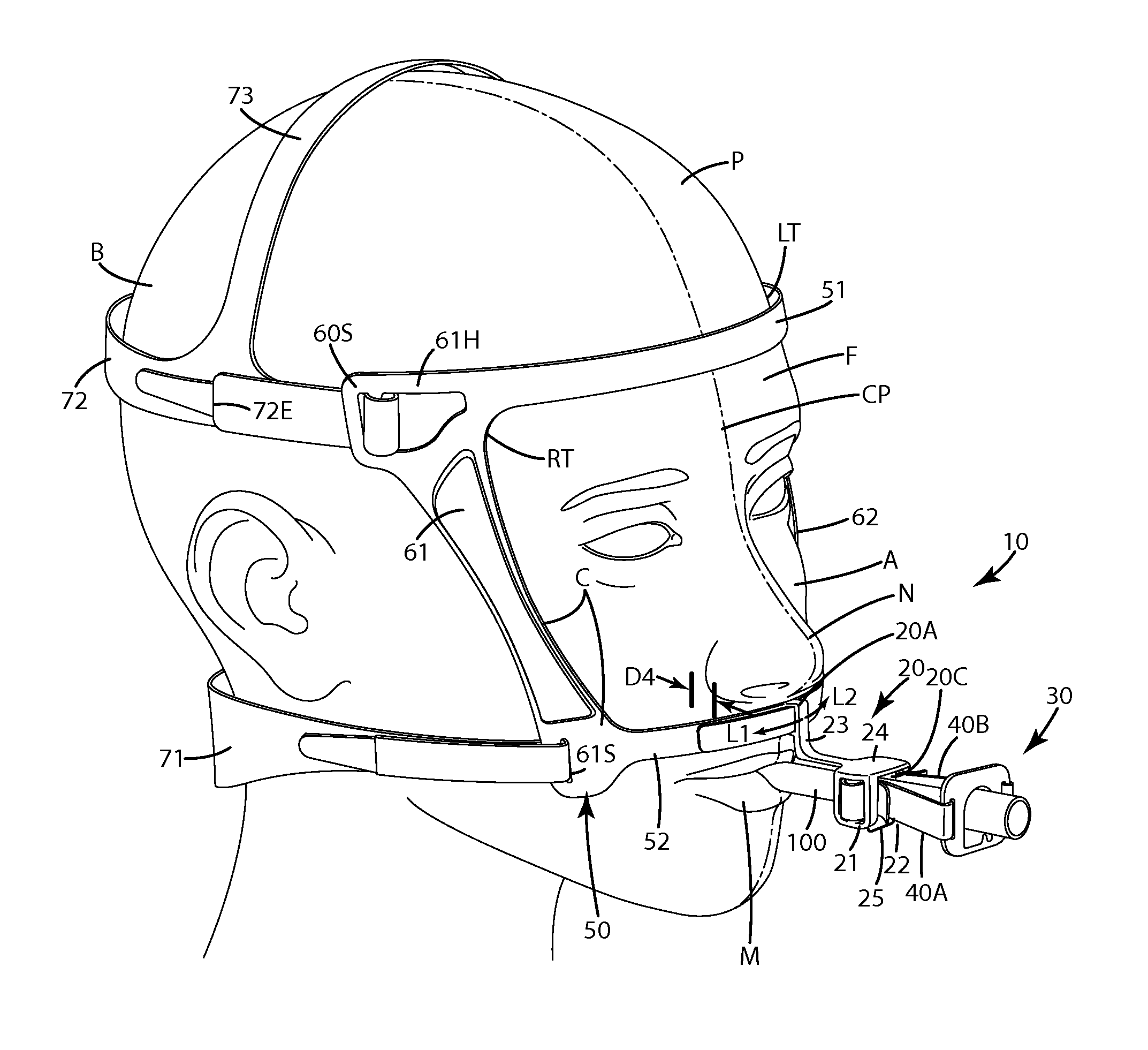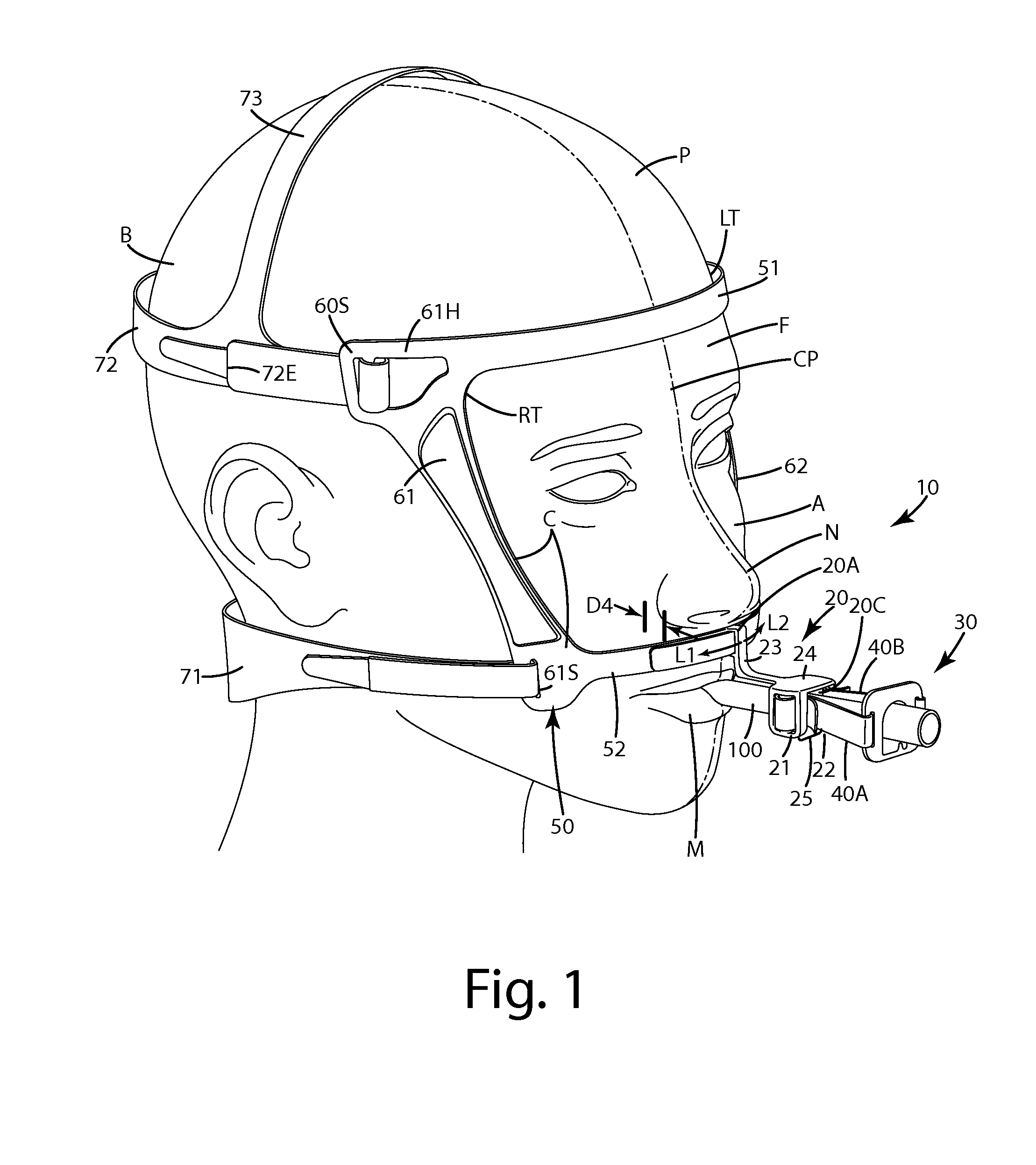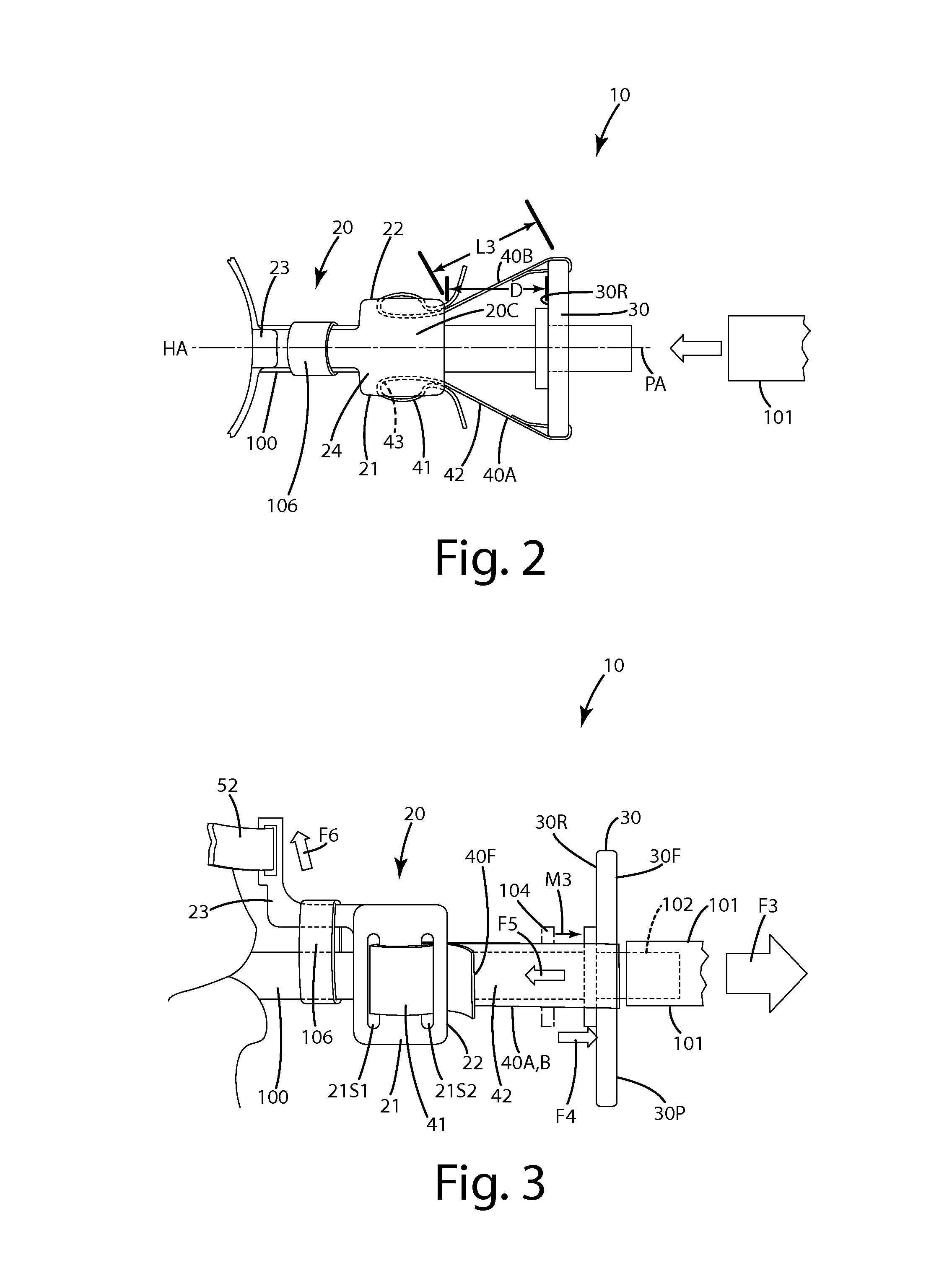Medical tube holder and related methods
a technology for medical tubes and holder plates, applied in the field of medical tube holders, can solve the problems of unplanned extubation, intentional self-extubation, long hospital stay, etc., and achieve the effects of reducing the likelihood of preventing or impairing self or accidental extubation, and reducing hospital stay durations
- Summary
- Abstract
- Description
- Claims
- Application Information
AI Technical Summary
Benefits of technology
Problems solved by technology
Method used
Image
Examples
Embodiment Construction
I. Overview
[0029]A medical tube holder system adapted to prevent self or accidental extubation is illustrated in FIGS. 1-5 and generally designated 10. The system 10 can include a holding assembly 20, a retainer block 30 and one or more attachment elements 40A and 40B. These components are configured to selectively engage different portions of the endotracheal tube 100 when installed in a patient's mouth and / or airway.
[0030]The system 10 also can include a face support 50 having a curved or rounded track 52 which extends generally under the patient's nose, adjacent their upper lip. This track or connector 52 can be configured so that it extends outward a distance D4 away from the patient's skin above their lip. The distance D4 can be approximately 0.5 mm to about 10 mm or other distances depending on the particular application. Optionally, although the connector 52 may be placed away from the upper lip, it can be in contact with the lip. The connector generally runs parallel to the ...
PUM
 Login to View More
Login to View More Abstract
Description
Claims
Application Information
 Login to View More
Login to View More - R&D
- Intellectual Property
- Life Sciences
- Materials
- Tech Scout
- Unparalleled Data Quality
- Higher Quality Content
- 60% Fewer Hallucinations
Browse by: Latest US Patents, China's latest patents, Technical Efficacy Thesaurus, Application Domain, Technology Topic, Popular Technical Reports.
© 2025 PatSnap. All rights reserved.Legal|Privacy policy|Modern Slavery Act Transparency Statement|Sitemap|About US| Contact US: help@patsnap.com



